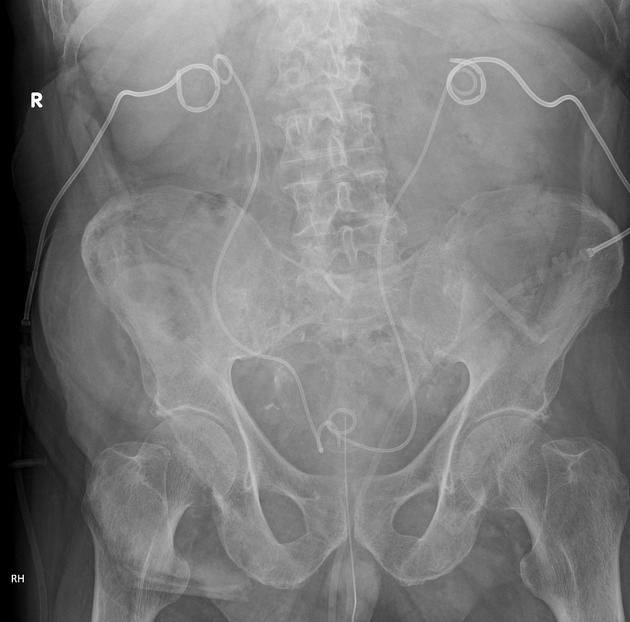Nephrostomy is a common urologic or interventional radiology procedure in which a tube/catheter is introduced into the renal collecting system (usually the renal pelvis).
Nephrostomies can either be
-
"open" nephrostomy: after a urological surgical procedure, such as a UPJ stone removal
these tend to be larger caliber catheters and the open approach is less common now for initial access to the collecting system
percutaneous nephrostomy: performed with a needle-over-wire (Seldinger technique) using ultrasound or fluoroscopic guidance
A nephrostomy can be used to relieve pressure in a hydronephrotic kidney, drain purulent material in pyonephrosis, or obtain access/reaccess for upper tract stone removal.
On this page:
Radiographic features
The upper collecting system can be fluoroscopically-evaluated by introducing water soluble contrast through the nephrostomy catheter (nephrostogram / antegrade pyelogram). This can be useful to determine tube position or assess for residual stones in the upper collecting system.
Complications
catheter dislodgement or kinking
catheter obstruction (clot, purulent material, stone)
Allergic reaction to the contrast dye (if used).
History and etymology
"Nephrostomy" is derived from a combination of the classical Greek terms "nephros" (kidney) and "stoma" (mouth), i.e. an opening into the kidney.






 Unable to process the form. Check for errors and try again.
Unable to process the form. Check for errors and try again.